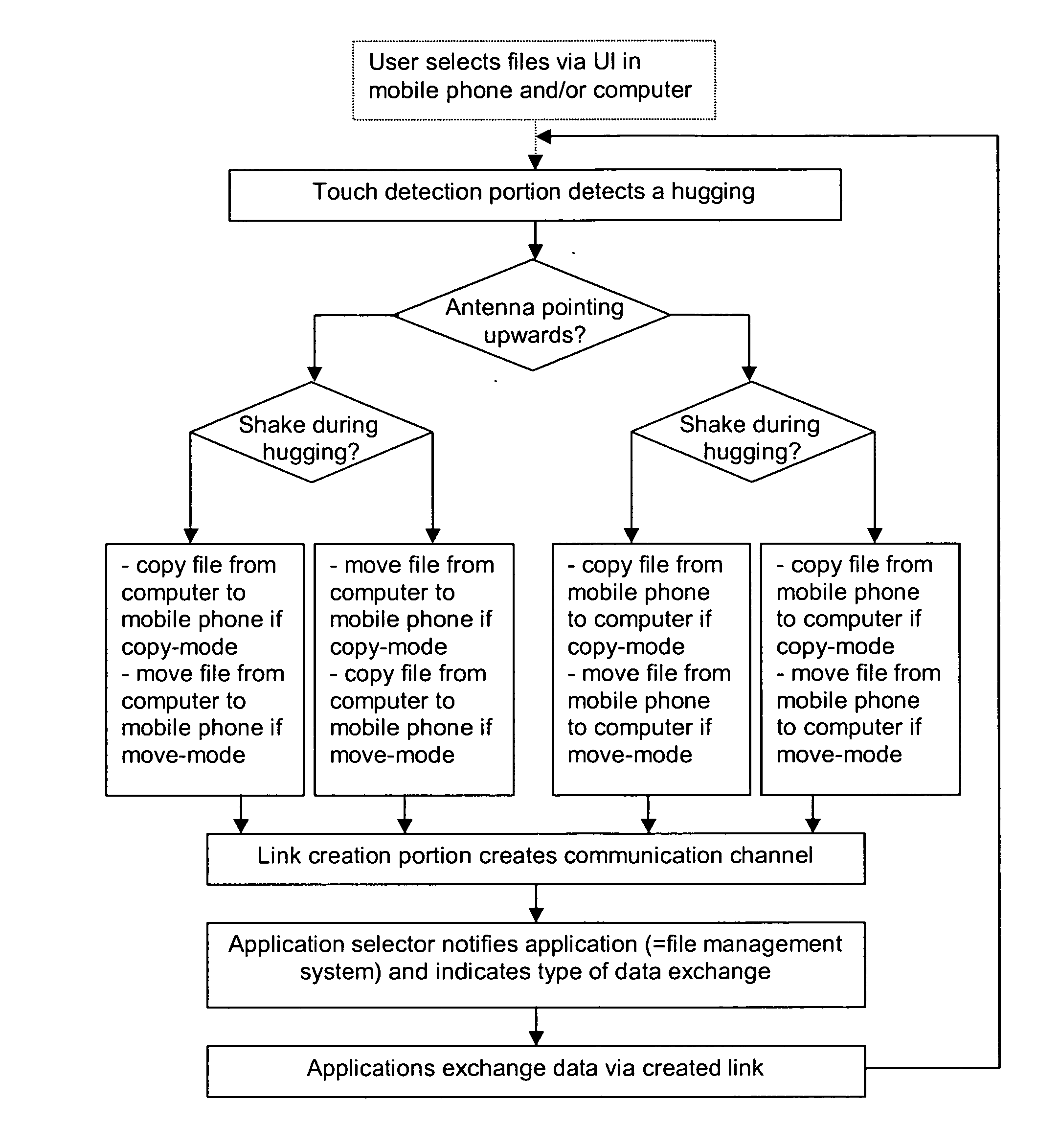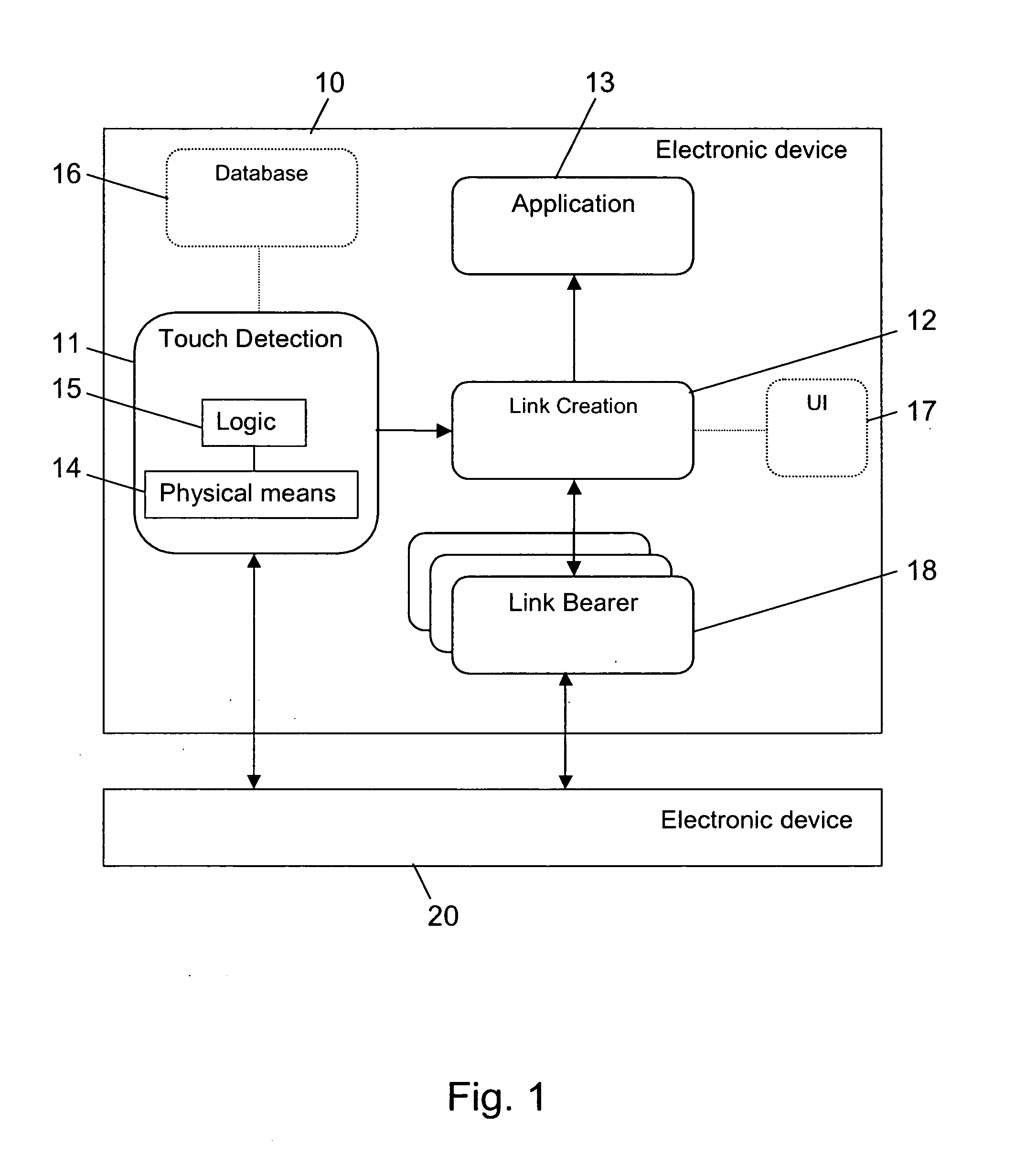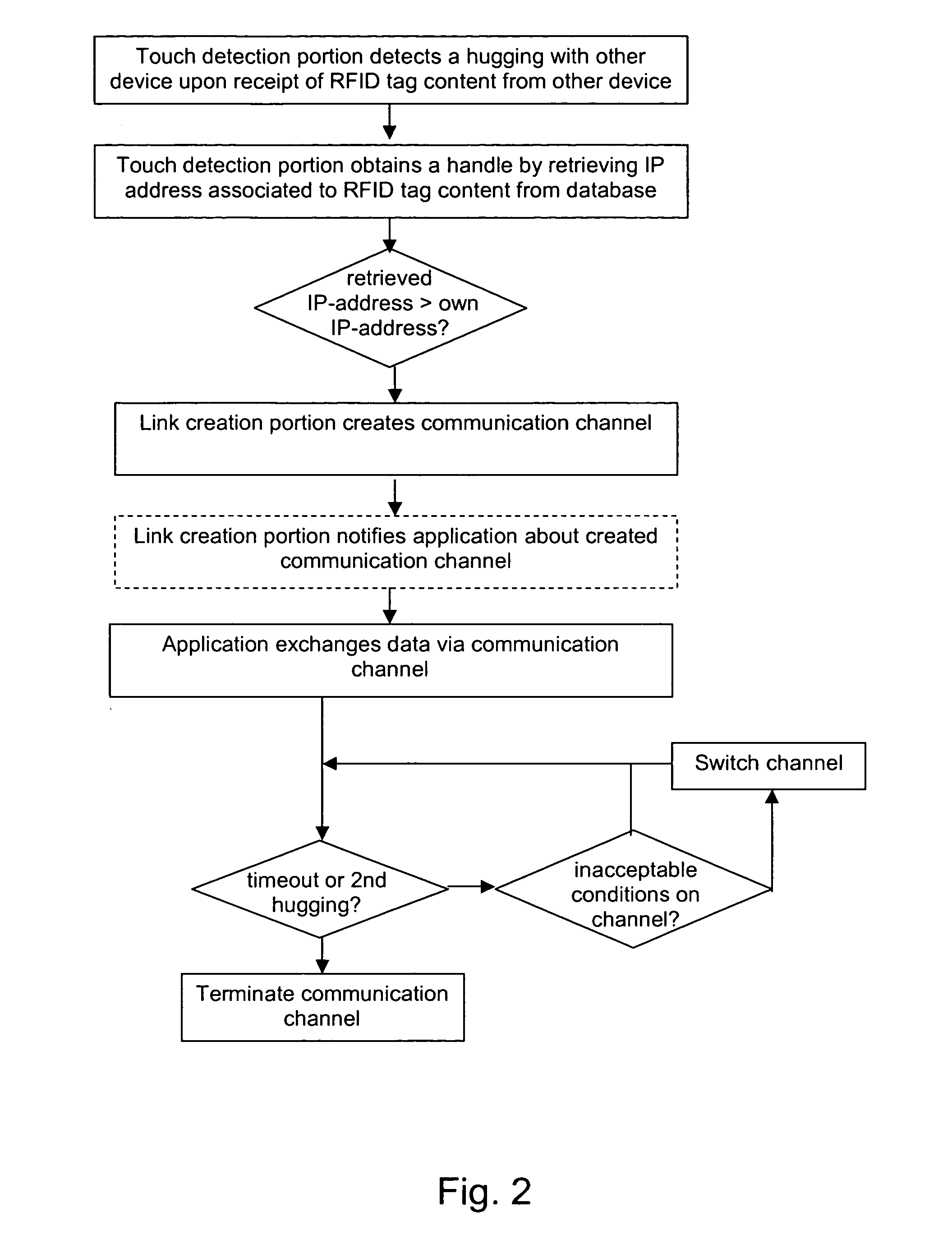Ad-hoc connection between electronic devices
a technology of electronic devices and connections, applied in the field of ad-hoc connection between electronic devices, can solve the problems of burden in actually using an available function and the challenge of connecting profiles, and achieve the effects of reducing user time, avoiding having to type through a menu structure, and improving usability of electronic devices
- Summary
- Abstract
- Description
- Claims
- Application Information
AI Technical Summary
Benefits of technology
Problems solved by technology
Method used
Image
Examples
first embodiment
[0096]FIG. 1 schematically presents a block diagram with two electronic devices 10, 20, which are enabled to create a hugging-based ad-hoc connection between each other in accordance with the invention. At least one of the electronic devices is a mobile device.
[0097] The first electronic device 10 comprises a touch detection portion 11, a link creation portion 12 and at least one application 13. The touch detection portion 11 further comprises physical means 14 for realizing the hugging and a logic 15. The touch detection portion 11 may further have access to a local database 16, as indicated in FIG. 1 by dotted lines. The database 16 maps known RFIDs to usable IP addresses. Moreover, a user interface 17 may be connected to the link creation portion 12, which is equally indicted by dotted lines. In the current embodiment, the physical means 14 for hugging include by way of example by an RFID chip, which is integrated into the electronic device 10. The link creation portion 12 has ac...
second embodiment
[0122]FIG. 3 schematically presents a block diagram with two electronic devices 30, 40, which are enabled to create a hugging-based ad-hoc connection between each other in accordance with the invention. At least one of the electronic devices is a mobile device.
[0123] The first electronic device 30 comprises components 31 to 38 which correspond to the components 11 to 18 of the first electronic device 10 of FIG. 1. In addition, however, it comprises an application selector 39 arranged between the link creation portion 32 and a plurality of applications 33.
[0124] For the second electronic device 40, no details are shown. It is assumed to comprises the same components as the first electronic device 30, even though some components could be missing.
[0125] The creation of an ad-hoc connection between the first electronic device 30 and the second electronic device 40 of FIG. 3 will now be described with reference to the flow chart of FIG. 4.
[0126] The creation of the ad-hoc connection i...
third embodiment
[0137]FIG. 5 schematically presents an electronic device, which is enabled to create a hugging-based ad-hoc connection with another electronic device in accordance with the invention.
[0138] The electronic device 50 comprises in contrast to the embodiments of FIGS. 1 and 3 an extendable framework with partly variable functional blocks.
[0139] The framework comprises like the electronic devices of FIGS. 1 and 3 a touch detection portion 51, a link creation portion 52 with access to link bearers 58 and applications 53. In addition, however, it comprises an additional control logic portion 60 which is responsible for enforcing the logic needed to provide additional services which a particular implementation of the electronic device 50 may provide to the applications 53 in the device 50 or in other devices, or to the implementation in general of other devices.
[0140] The touch detection portion 51, the link creation portion 52 and the applications53 have access to the additional control ...
PUM
 Login to View More
Login to View More Abstract
Description
Claims
Application Information
 Login to View More
Login to View More - R&D
- Intellectual Property
- Life Sciences
- Materials
- Tech Scout
- Unparalleled Data Quality
- Higher Quality Content
- 60% Fewer Hallucinations
Browse by: Latest US Patents, China's latest patents, Technical Efficacy Thesaurus, Application Domain, Technology Topic, Popular Technical Reports.
© 2025 PatSnap. All rights reserved.Legal|Privacy policy|Modern Slavery Act Transparency Statement|Sitemap|About US| Contact US: help@patsnap.com



